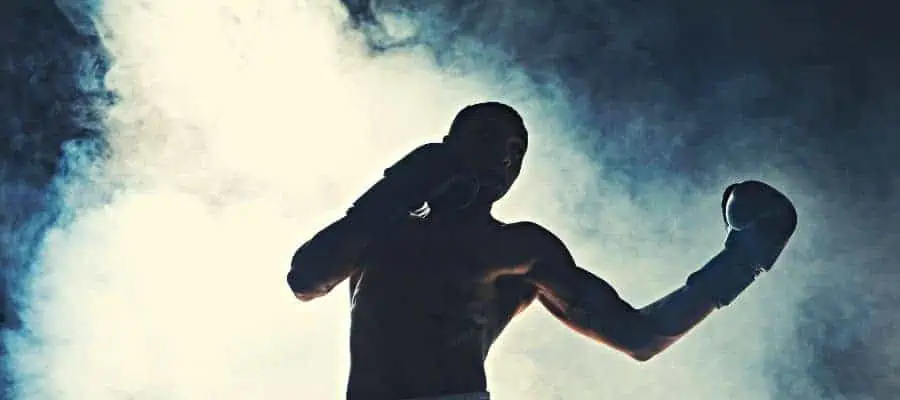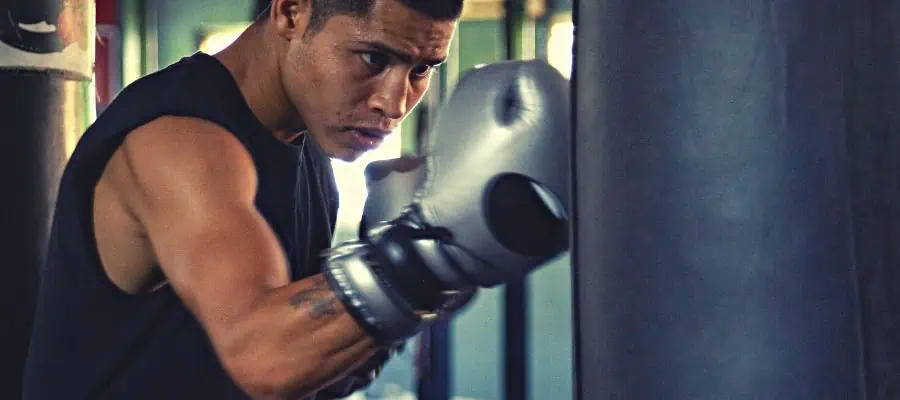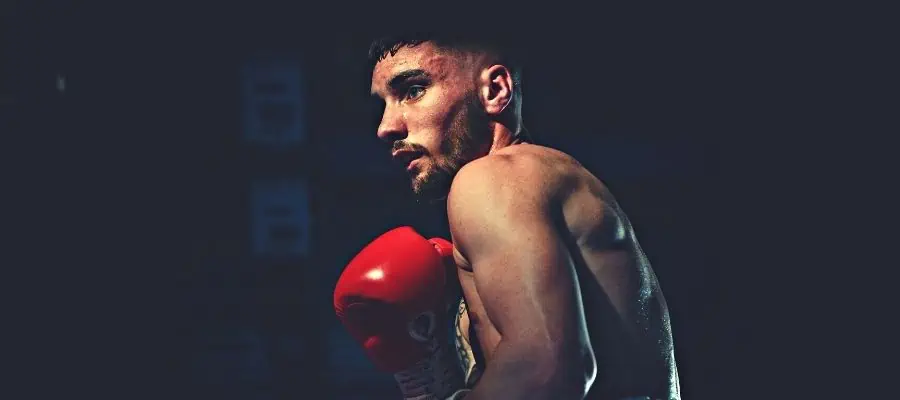In boxing, having larger fists can give you an advantage in the ring, but is it as simple as having bigger hands? The size of your fists can affect your striking power and defense, but it’s not the only factor to consider. Let’s clear something up right from the get-go; when say, hand size, I mean the size of the fist. I am not talking about the size of the arms and shoulders.
So, does having larger fists give a boxer an advantage? The size of your fists does play a role in boxing, as larger fists can generate more power behind each punch. However, other factors such as technique, speed, and footwork are crucial in determining a fighter’s success. Larger fists can also make blocking and defending against incoming punches easier. However, proper technique is still essential in doing so effectively.
To truly understand the role of fist size in boxing, it’s essential to delve deeper into the sport and examine the various factors contributing to a fighter’s success. So, if you’re interested in discovering more about the interplay between fist size, technique, and performance in boxing, be sure to read on.
Does Having Bigger Fists Give You An Advantage In Boxing?

The debate on the impact of fist size in boxing has been ongoing, with many boxers and experts weighing in on the subject.
While numerous factors play into this question, I must say yes. Larger hands can give a boxer more power and accuracy when throwing punches. The bigger the fist, the more surface area and weight there is to push through an opponent’s guard.
However, smaller fists may offer their own set of advantages as well. Smaller fists have the advantage of being able to move faster due to their size. This can be beneficial in bouts where you can’t win via knockout but have to count on winning via points. Speed is vital in landing effective shots before your opponent counters or evades them.
Power Output
First, it’s important to understand that hand size can affect a boxer’s ability to generate power. Larger hands typically have longer fingers and a larger surface area, making it easier to generate force when punching. This can be especially beneficial for fighters who rely on power punches, such as heavyweights.
These fighters depend on their punches to knock out their opponents. With larger hands, they have a greater surface area for the fist to make contact with the opponent, which can result in more knockouts. Additionally, larger hands also mean a larger surface area for the glove, which can damage the opponent more.
However, hand size alone does not determine a fighter’s power. How a boxer generates power is a combination of both hand size and technique. A fighter with smaller hands can still be powerful if they have mastered the mechanics of punching and know how to properly transfer energy from their body to their fists.
A boxer with smaller hands can compensate for this by developing a more powerful punch through proper technique and training. They may use their hands to generate power by using their entire body to transfer energy to their fists. This can include using their legs and core to generate power, resulting in punches that are just as powerful as those thrown by a boxer with larger hands.
Defense
In boxing, having larger fists can give a fighter an advantage in terms of defense. Larger fists can cover a larger surface area, making it more difficult for an opponent to land punches. This can be especially beneficial for fighters who rely on blocking and slipping punches to avoid taking damage.
A boxer with larger fists can cover more of their face and body with their gloves, making it more difficult for their opponent to land punches on vital areas. Additionally, larger fists can provide a small advantage during the clinch. In a clinch, the fighters are close and can use their hands to control their opponent’s head and arms.
A boxer with larger fists can use their hands to control their opponent’s head and arms more effectively, limiting their opponent’s ability to punch and score points. This can also provide a small advantage during the clinch by making it more difficult for the opponent to land punches, which can be crucial for winning by points.
Speed
A knockout is less likely to occur in the lower-weight boxing divisions because the fighters have less power and less weight behind their punches. Therefore, winning by points becomes more critical in these weight classes. In this scenario, having smaller hands can be beneficial for certain boxers.
Smaller hands can give a fighter an advantage in terms of speed and mobility. With less surface area to cover, a boxer with smaller hands can move their fists more quickly and easily, allowing them to throw punches faster.
This can be especially beneficial for fighters who rely on volume punching and outworking their opponents to win by points. They can throw more punches in a shorter time, and with a faster punch rate, they can land more punches on the opponent, resulting in a higher total of points.
Injuries
A boxer with larger fists may be less prone to injuries of the fist compared to one with smaller fists. This is because larger fists have a greater surface area and more padding, which can help absorb punches’ impact and reduce the risk of injury.
When a boxer throws a punch, the punch’s force is concentrated on a small area of the fist, which can result in injuries such as fractures and sprains. With larger fists, the punch’s force is spread over a larger surface area, which can reduce the risk of injury. This can also help reduce the risk of hand injuries such as knuckle sprains, common in boxers.
Additionally, larger fists have more padding, which can also help to reduce the risk of injury. The padding in the gloves and the fists themselves can absorb some of the impacts of the punch, which can help to reduce the risk of injury.
This is particularly important for boxers who rely on power punching and are likelier to throw punches with a lot of force. Bigger fists also have larger bones and more muscles on them, with thicker tendons. This can give a boxer more stability and strength in their fists, which can help prevent injuries.
How To Develop Larger And Stronger Fists

Developing larger and stronger fists for boxing can be accomplished through a combination of grip training, nutrition, heavy bag work, and proper recovery. Here are a few additional tips on how to develop larger and stronger fists for boxing:
Grip training: Incorporate grip training exercises such as hanging from a pull-up bar, using hand grippers, or squeezing a rubber ball. These exercises can help to increase the strength and size of the muscles in your hands and wrists.
Nutrition: A diet rich in calcium, magnesium, and protein can help support the growth and development of the bones and muscles in your fists.
Heavy bag work: Incorporating heavy bag work into your training can be an effective way to develop larger and stronger fists. Hitting a heavy bag with proper technique can help increase your fists’ power and size over time.
Gradually thickening your knuckles: Gently hitting hard objects such as wood can help gradually thicken your bones over time. This can help to increase the power and size of your fists.
Rest and recovery: Giving your fists time to rest and recover after training is important. Overuse can lead to injury and impede progress. Make sure to stretch your hands and wrists, and take time off if you feel pain or discomfort.
It’s important to note that developing larger and stronger fists for boxing takes time and consistent effort. Incorporating these tips into your training routine can help increase the size and strength of your fists over time. Still, it’s essential to be patient and consistent. Additionally, it’s important to remember to always use proper technique when training and hitting hard objects to avoid injury.
Boxers With Large Fists

There are plenty of boxers who have larger fists than average. Some of the most well-known examples include:
Sonny Liston: Known for his powerful punches and intimidating presence, Sonny Liston had large fists that were often compared to hams. His fists were so large that they were said to be nearly the size of a regulation basketball.
George Foreman: George Foreman was a former heavyweight champion known for his powerful punches and large fists. His fists were said to be massive, and he often used them to deliver devastating knockouts to his opponents.
Lennox Lewis: Lennox Lewis was a former heavyweight champion known for his powerful punches and large fists. His fists were said to be large, and he often used them to deliver devastating knockouts to his opponents. He was known for his power punches, particularly his left hook, which was considered one of the most powerful in heavyweight history.
Of course, most of these are heavyweights, but even among heavyweights, these three stood out for their larger fists.
Boxers With Small Fists

As for boxers with small fists, there are many examples. Some of the most well-known boxers with smaller fists include:
Floyd Mayweather: Known for his superior technique and defensive skills, Floyd Mayweather is considered one of the greatest boxers of all time. Despite having small hands, he achieved a record of 50-0 and held multiple world titles across different weight classes. Thanks to his superior technique, footwork, and strategy, his small hands did not prevent him from becoming one of the most successful boxers in history.
Manny Pacquiao: He is considered one of the greatest boxers of his generation and one of the best pound-for-pound fighters of all time. Despite having small hands, he achieved a record of 62-7-2 and held multiple world titles across different weight classes. His small hands did not prevent him from becoming one of the most successful boxers in history, thanks to his superior speed, power, and stamina.
Other Important Factors

However, it’s important to note that while having larger fists can provide an advantage in defense, it is not the only factor determining a fighter’s success. A boxer’s overall technique, strategy, and athleticism are also crucial to their skill set.
A fighter who has mastered their defense technique and has a solid game plan can be just as effective as a fighter with larger fists. Additionally, a boxer’s overall athleticism and conditioning are critical to their success in the ring.
A boxer’s reach, for example, would be a more important factor than having larger fists. A longer reach can help a fighter stay outside their opponent’s range and effectively land punches while avoiding counter-attacks. Speed is another important factor, as faster fighters can land punches quicker and react more quickly to opponents’ strikes.
Conclusion
Ultimately, having larger fists can be an advantage in boxing. Still, it is not the only factor determining a fighter’s success. Developing larger and stronger fists requires dedication and consistent effort. Still, patience and hard work can give you a competitive edge in the ring. Additionally, it’s important to remember that a fighter’s overall technique, strategy, and athleticism are essential to their skill set. Dedication and hard work can make you a successful boxer regardless of the size of your fists.
5 thoughts on “Does Hand Size Matter In Boxing? Who has the advantage?”
Leave a Reply
Recent Posts
What is Manachai's Fighting Style? Unveiling Muay Thai Mastery
Manachai, a celebrated figure in the Muay Thai world, has captivated audiences with his exemplary martial prowess. Hailing from the heartlands of Thailand, his name is synonymous with the art of...
What Was Chamuekpet Hapalang's Fighting Style? Unveiling Techniques
Chamuekpet Hapalang was a renowned figure in the world of Muay Thai (record 200-48-2), embodying a fusion of Muay Bouk and Muay Khao styles. Originating from Thailand, the art of Muay Thai is known...

Have a nice day! Is the circumference of the fist measured by making a fist and measuring around it, including the thumbs? Also, should you measure around or behind the knuckles?
Hi,
Just wrap the measuring tape around your dominant hand below the knuckles, excluding the thumb, and make a fist.
Hope this helps you. 🙂
Thanks for your help! I was curious about your opinion and I have read about it elsewhere. I heard conflicting opinions. There is a video of Mike Tyson on youtube where they show his measurements and they measure his fist by taking his thumb into account. So now I am at a loss.
Shown at 0:47
https://youtu.be/bq_XrLsJ-70?si=iHmCty8KRzwg8AyM
here’s a good explanation video
https://www.youtube.com/watch?v=t8IYy3VkEKk